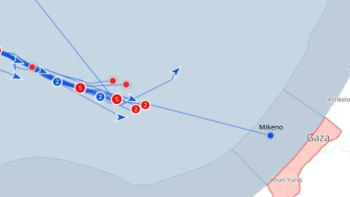$1b a year needed to hit 2030 green energy goal

Bangladesh needs to expand its renewable energy capacity by 21 percent annually to meet its latest green energy target by 2030, requiring nearly $1 billion in yearly investment, according to a study by the Institute for Energy Economics and Financial Analysis (IEEFA).
The country will need up to $1.4 billion a year until 2040 to reach the new goals set by the government this month, said the study.
Earlier this month, the government revised the 2008 Renewable Energy Policy, setting a target to generate 20 percent of total electricity from renewable sources by 2030 and 30 percent by 2040.
Drawing on demand projections from the Integrated Energy and Power Master Plan 2023, the study calculates that Bangladesh will need to generate 5,851 megawatts (MW) from renewable sources by 2030 and 16,506 MW by 2040.
Currently, the country's renewable capacity stands at just 1,559 MW. To meet the 2030 target, an additional 3,831 MW will have to be installed. A further 10,655 MW would be required in the following decade to achieve the 2040 goal.
The 2008 policy had set a target for renewable sources to make up 10 percent of total generation capacity by 2021, but that share remains stuck at around 5 percent.
"Bangladesh's renewable energy sector is at a nascent stage, with its contribution to the national grid standing at only 3.6 percent of total power system capacity in April 2025," the report said.
"The combined renewable energy capacity rises to a meagre 5.07 percent if small-scale systems are included, like solar home systems, rooftop solar, and solar irrigation," it added.
According to the study, the shortfall is due to difficulties in acquiring land, financing bottlenecks, and an underdeveloped regulatory framework.
It added that unless these barriers are addressed, Bangladesh risks falling short of its revised targets as well.
Despite falling prices and rising global interest in clean energy, investment in renewables has remained limited in Bangladesh.
From 2009 to 2022, the power sector drew $30 billion in investment, the bulk of which went into fossil fuel projects that added 16,800 MW of capacity.
In contrast, the renewable sector grew by less than 1,000 MW during the same period. Between 2018 and 2023, clean energy investment amounted to just $1.43 billion, according to the study.
The report forecasts that solar will dominate the renewable energy mix, contributing between 45 and 55 percent of capacity, depending on the scenario.
This would be followed by rooftop solar, solar-powered irrigation, wind, and waste-to-energy initiatives.
To meet its 2030 goal, Bangladesh will need to invest between $933 million and $980 million annually. After 2030, that figure is projected to rise to $1.46 billion a year.
The study said government subsidies to the Bangladesh Power Development Board (PDB) are growing. In the fiscal year (FY) 2023–24, the board received around Tk 38,000 crore to cover revenue losses. That subsidy may rise by 55 percent in the next fiscal year.
Following the suspension of the Quick Enhancement of Electricity and Energy Supply Act in August 2024, the government began tendering large-scale renewable projects without implementation agreements, which were previously used as de facto sovereign guarantees.
According to the study, this shift has left power developers wary, as the lack of payment guarantees makes it harder to secure loans.
The researchers recommended reinstating implementation agreements or setting up a dedicated fund to ensure timely payments to solar producers, especially in the face of regulatory changes or delays.
They also suggested that the government identify and reserve suitable land for large-scale solar plants through resource mapping and use Public-Private Partnership (PPP) models to resolve land acquisition issues.
To stay on track, the country should scale up its current investment levels of around $238 million a year by four to six times over the next five to 15 years, the study said.
This will require large-scale mobilisation of domestic and international capital, along with private sector engagement.
"The renewable energy sector faces several challenges, including policy and contractual risks, sovereign and currency risks, and off-taker's risks," the report said.
It also said that land acquisition issues and the lack of affordable, long-term financing compound the problem. Smaller projects face technological and performance risks, high import duties, and stringent collateral requirements for loans.
"The country needs to create an enabling environment for investment in utility-scale projects through streamlined policy and regulations," it added.
The study, "Catalysing Renewable Energy Finance in Bangladesh", was conducted by IEEFA's Lead Energy Analyst Shafiqul Alam and Sustainable Finance Consultant Labanya Prakash Jena.

 For all latest news, follow The Daily Star's Google News channel.
For all latest news, follow The Daily Star's Google News channel. 








Comments